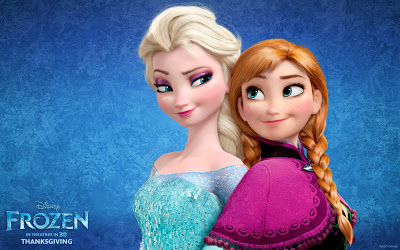 Nov. 22, 2019 Frozen 2: With the opening weekend of Frozen 2 and a script laced with big topics from tribalism to ethnic genocide, there are icebreakers and family history springboards aplenty.
Nov. 22, 2019 Frozen 2: With the opening weekend of Frozen 2 and a script laced with big topics from tribalism to ethnic genocide, there are icebreakers and family history springboards aplenty.
Interesting that Disney took a preemptive step to negate cultural appropriation backlash by signing an agreement with indigenous Sami culture for respectful portrayal; first I’ve ever seen of social media influence impacting a production on the front end. Haven’t seen it yet, but the buzz is aflutter on Twitter and parents might want to read a few reviews to frame their chats by age, for either the shallow end or the deep dive.
Original Post: Mar. 2, 2014 If you’ve ever been “frozen out” by kids’ conversations when you know something is bothering them, and want to ditch the “How was your school day” drive time banter, using media is a great way to listen with intention and tease out some of the more nuanced social emotional tough stuff that may not flow freely otherwise.
Just as the American Academy of Pediatrics suggests the merits of parents ‘co-viewing’ media with young kids, I think caregivers of all kinds (educators, babysitters, extended family, etc.) can benefit from truly LISTENING to how media lands on kids and use the popularity of the zeitgeist to glean greater insights, intimacy and understanding of what it’s like to be a child today.
If you’re not one of the gazillions worldwide who have seen the Disney hit movie Frozen yet, you’ll want to put this post on ice, as this uses quick captures of plot points to uncork conversations. If you have, you’ll know Frozen is on the tip of the tongue of families far and wide, nominated for an Academy Award, and has a catchy, earworm of a hit song “Let it Go” that will not let you do that at all.
Assuming you can bury the bias baggage of your own reaction to the film, this post is about using examples from the character’s relationships and movie’s hooks to light the path to deeper, more meaningful touchpoints.
Frozen: Talking points That Break the Ice For Deeper Conversations With Children
Bullying/Relational Aggression:
Exclusion, Dismissiveness, Secret-Keeping, Being Shut Out, Isolation: What Did I Do to Deserve This?
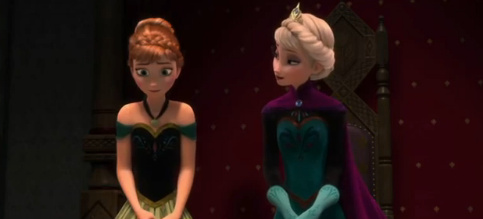 The younger sister, Anna being ‘frozen out’ by the older Elsa, while not knowing what she had ‘done’ to deserve this ‘frenemie’ style treatment is classic “relational aggression” and a perfect opportunity to uncork a conversation about bullying (an all too common universal touchpoint, surfacing on playgrounds and psyches worldwide).
The younger sister, Anna being ‘frozen out’ by the older Elsa, while not knowing what she had ‘done’ to deserve this ‘frenemie’ style treatment is classic “relational aggression” and a perfect opportunity to uncork a conversation about bullying (an all too common universal touchpoint, surfacing on playgrounds and psyches worldwide).
It could’ve been torn from the pages of Rachel Simmons’ Odd Girl Out: The Hidden Culture of Aggression in Girls (a great read, with solutions and coping skills in the mix for parents of girls and girls themselves!) The viewer’s empathy is extensive for BOTH sisters witnessing Elsa accidentally harm Anna with her colossal, uncontrollable powers…Play comes to a screeching stop as the sisters are achingly separated by their parents forevermore to “protect” the secret while Anna is given zero explanation, feeling she’s done something wrong, but doesn’t know WHAT.
Banished from each other to “protect” them from harm and squelch “secrets” brings up a bounty of juicy social emotional fodder that can be expounded upon in multiple directions too. It’s an inexplicably harsh plot point right out the gate…used wisely, it can reveal a plethora of backstory in real life that kids could use some serious help with, especially relational aggression within circles of friends.
“Have you ever felt left out but couldn’t figure out WHY you were being treated a certain way no matter how many times you tried?”
There are so many instances where this could be an empowering “consider this” moment…
Elsa’s “mean girl” shunning antics obviously had a much deeper subtext and layered set of circumstances complicated by her parents and out of her own control. This could easily apply to a child dealing with racial prejudice (or gender, politics, environmental/neighborhood spat) such as this “kidlit” story Operation Marriage where a child’s parents “decided” the kids shouldn’t play anymore, due to their own falling out over politics and belief systems.
“Could it be about them and not you? Consider it!”
Instigators of bullying often bring considerable baggage into the mix that’s off the radar and this is a great time to draw upon all the resources validating this point, to talk about secrets going sideways and rarely working out well for ANY one (child abuse, sexual assault, homelessness, poverty, incest are just a few of the adverse childhood experiences (ACEs) that psychologists and educators wrestle with trying to tease out from a secret-keeping child)
On a more universal childhood note, parents can talk about unfairness, bullying behavior, bystanders and upstanders, self-worth, or lack thereof and the extraordinary sense of RESILIENCE the shunned Anna brings to the mix. This is an opportunity to bring up strong coping skills, akin to Anna’s healthy, solutions-based ‘control the controllables’ attitude that doesn’t defeat her.
“What did Anna do to make her own life and play time fun and amusing? ”
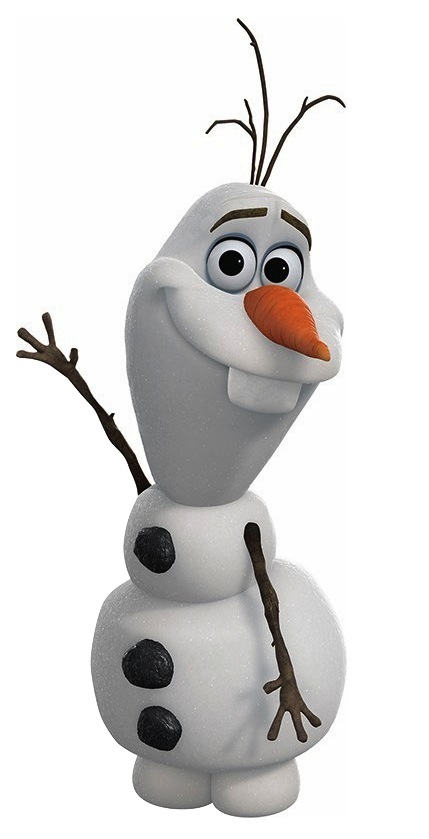 How did she reshuffle the deck and redeal the cards so to speak? Even though she missed her play pal desperately, she found other ways to occupy her time and redirect her energy, including quality play with her faithful snowpal Olaf. “What kind of things do you do when that happens to you?”
How did she reshuffle the deck and redeal the cards so to speak? Even though she missed her play pal desperately, she found other ways to occupy her time and redirect her energy, including quality play with her faithful snowpal Olaf. “What kind of things do you do when that happens to you?”
Depending on age and stage beyond playground politics, this uncorks communication styles, outreach methods, even segues to family relationships and infighting among relatives, pointing to some of those stubborn “grudge” stories among siblings and blood relatives, with permission to “move on” and get beyond the ‘whos/whys’ of what happened to take charge of the ‘when/how’ are you going to do move forward with closure. (parents need to be very sensitive to this if there’s an ‘outcast/black sheep’ relative in the familial environment, as the child’s perception and fear of similar abandonment can bring up all kinds of concerns)
Other topics spinning off that one plot point?
Authority Figures/Controlling Behavior
Over-Protectiveness, Possessiveness, Power Plays: (Parents, Peers/BFFs, unhealthy boy-girlfriend dynamics)
 Is there “hot housing” or ‘bubble-wrapping” of kids going on in your child’s circle of friends creating fear or anxiety that leaks into your sphere?
Is there “hot housing” or ‘bubble-wrapping” of kids going on in your child’s circle of friends creating fear or anxiety that leaks into your sphere?
Some parents are so keen on shielding kids to deter “potential” danger? (physical or mental; e.g. misguided internet panics and body snatching/predator fears in parks for wee ones, or judgments about peer influences ‘what to wear/who to date’ among teens, etc) that the perception vs reality of perceived harm is creating actual harm in itself.
This is a perfect segue to talk about unhealthy, controlling, behavior of ‘authority figures’ including coaches, teachers, first-bosses for teens, and other adults who have the ability to exert ‘under the thumb’ heavy-handed rules. Talking early on with kids about this can ‘red flag’ some of those watch worthy behaviors and seed a “question authority” internal compass that could come in handy later in life when exertion of power is lop-sided and detrimental.
Parental Loss/Fear of Abandonment:
Grief, Divorce, College Transitions, Vanishing Support Systems and Fears of Flying Solo
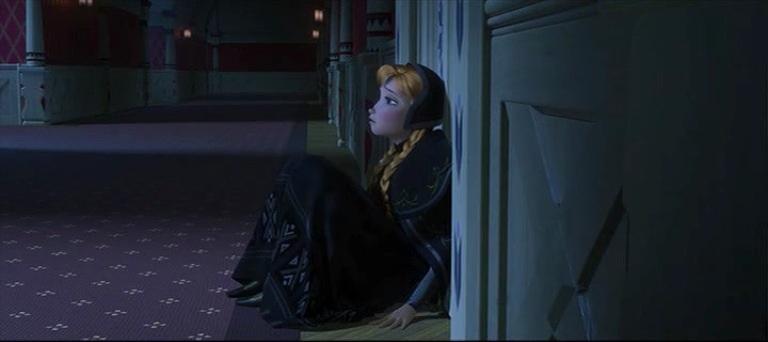 In Frozen, Disney killed off the parents pretty quick, even for their formulaic constant, when the parents set sail on a voyage and never return from a raging storm. The common thread of ‘going it alone’ surfaces as a repeated challenge in Frozen, from Anna’s solo play patterns to Elsa’s ice kingdom sans human contact, Kristoff, Sven, Olav and the longing for connection and a secure sense of trust is as fragile as an icicle.
In Frozen, Disney killed off the parents pretty quick, even for their formulaic constant, when the parents set sail on a voyage and never return from a raging storm. The common thread of ‘going it alone’ surfaces as a repeated challenge in Frozen, from Anna’s solo play patterns to Elsa’s ice kingdom sans human contact, Kristoff, Sven, Olav and the longing for connection and a secure sense of trust is as fragile as an icicle.
The two children we happened to be babysitting after Frozen were navigating the seas of their own parents’ divorce with sleep anxiety and ancillary turbulence, and Frozen prompted a ‘safe way’ to talk about ‘what ifs’ and disappearance with reassurance. The sibling love and ‘got your back’ style of Frozen clearly inspired both kids, as they both cited the finale as ‘the coolest part’ of the movie. THEY came forth with that theme on their own, and it’s a great way to reinforce the solidarity of people who will be there for you no matter what, and the deeply rooted ever-present love that doesn’t go away even through hard times, miscommunications and misunderstandings that can feel like chasms.
Older teens seguing to college or leaving home for the first time can springboard off of the need for security and solace in sibling support and friends as family “I’m just a text away” group assurance as well…lots of talking points here about being alone versus feeling alone and developing comfort and familiarity from within to brave new beginnings, etc.
Transformation/ Authenticity:
Nobility, Bravery, and People Pleasing Ponderables: “Who Are You Doing This For and Why?”
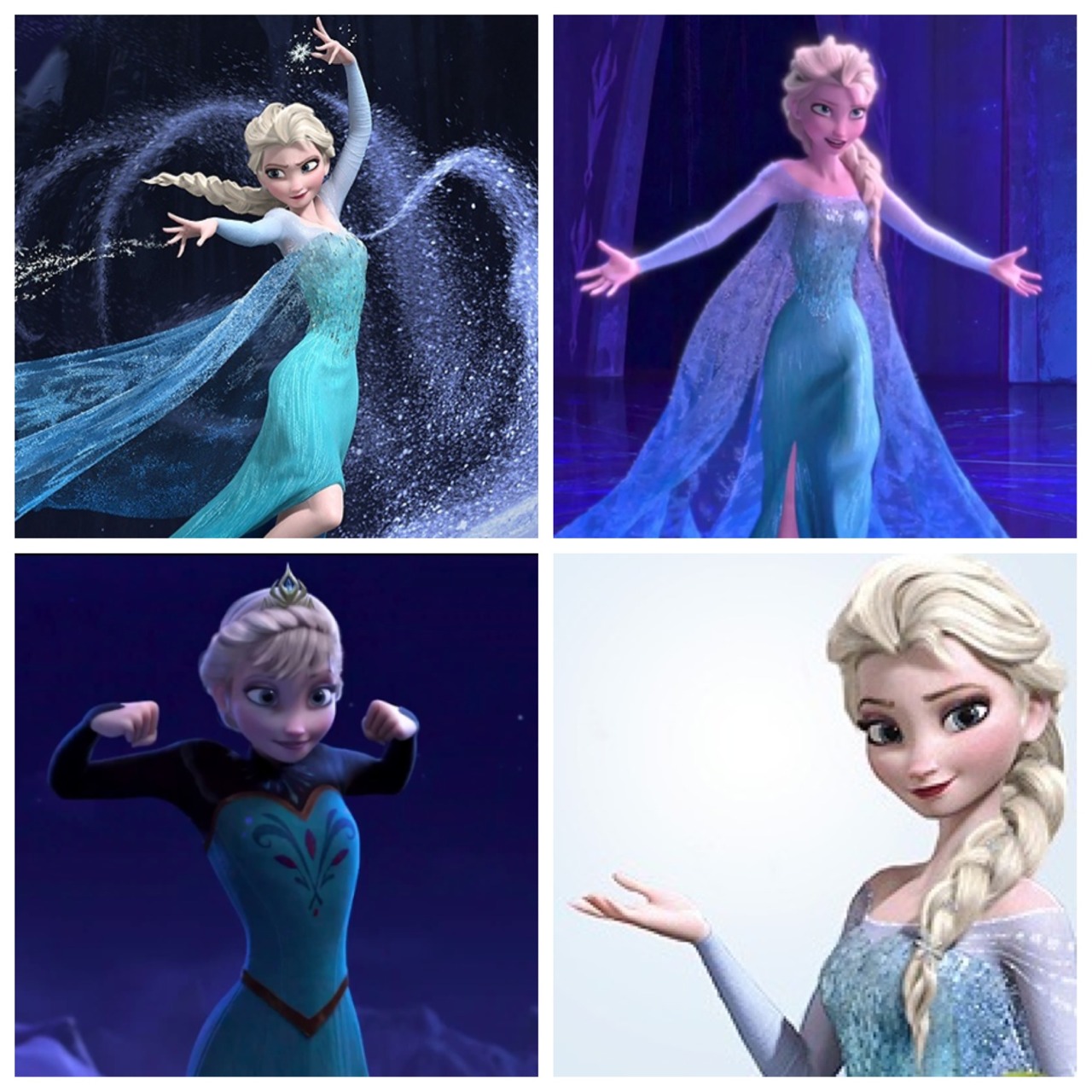 Family first thinking and duty and honor at the expense of self are topics that women are all too familiar with, so if you’re going to use mass media as a springboard for gleaning intimacy, it’s imperative to tune out your own bias and not just listen, but HEAR what’s going on in children’s hearts and minds in terms of raw, real emotion relating to a storyline.
Family first thinking and duty and honor at the expense of self are topics that women are all too familiar with, so if you’re going to use mass media as a springboard for gleaning intimacy, it’s imperative to tune out your own bias and not just listen, but HEAR what’s going on in children’s hearts and minds in terms of raw, real emotion relating to a storyline.
Watching Elsa’s painful transformation from a playful sibling to an ice princess early on in Frozen hit familiar notes of “Here we go again, the ol’ power for a female needs bottled up/controlled/isolated/banished so it doesn’t ‘get out of hand’ trope”…whereas a child might have deep empathy for her plight and see nothing but grace and nobility in her choices.
Whether you plunge off a few conversational cliffs, end up with an avalanche of emotion, or barely even scrape the powder off the ice, it’s worth the effort to warm up the habit of engaging with kids using THEIR world, kid culture to make tough topics relatable.
Seems like a great opportunity to listen and learn from each other, openly asking about predicaments and torturous inner conflicts where a child may have been placed in a ‘no win’ help or harm role. (again, lots of “upstanding” group dynamic angst with peers, authority figures/coaches that could reframe with solutions-based scenarios trumping an all or nothing approach)
To me, the ‘teachable moment’ here is about empathy and emotional plights.
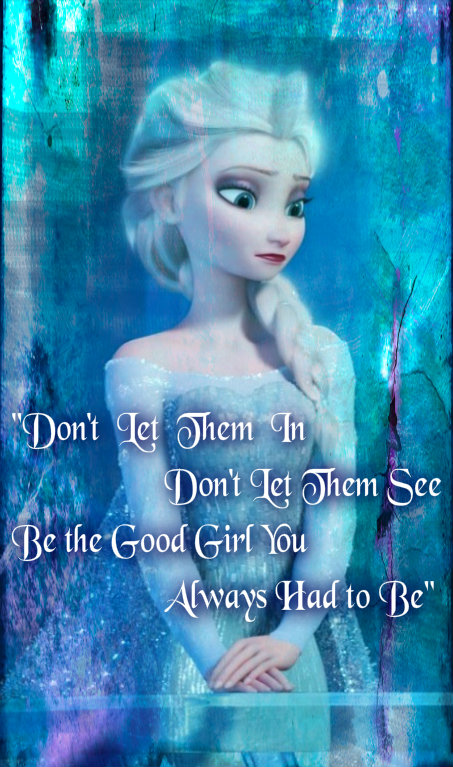 As an over-achiever personality inflicted with “The Curse of the Good Girl: Raising Our Girls with Courage and Confidence (another great book by Rachel Simmons; see my interview with her here) I had a hard time swallowing the self-driven banishment from the kingdom under the guise of transformation toward authenticity, but that’s the feminist flair coming out in my read. Likewise the “Hmn” over-thinking, “…If ice zaps Anna’s brain it’s fixable but if it hits her heart’s the heart she dies, what does that say about smarts over emotion and how we value and rank girls’ sense of self-worth in media?”
As an over-achiever personality inflicted with “The Curse of the Good Girl: Raising Our Girls with Courage and Confidence (another great book by Rachel Simmons; see my interview with her here) I had a hard time swallowing the self-driven banishment from the kingdom under the guise of transformation toward authenticity, but that’s the feminist flair coming out in my read. Likewise the “Hmn” over-thinking, “…If ice zaps Anna’s brain it’s fixable but if it hits her heart’s the heart she dies, what does that say about smarts over emotion and how we value and rank girls’ sense of self-worth in media?”
Again, my “bias baggage” had to be shed with Frozen as the core elements of the ‘disease to please’ theme are strewn all over this movie…(perfect visual at left by owlcityfan at deviant art)
Anna’s character is desperately trying to outreach to her sister Elsa and it’s heart-wrenching to see her overtures rebuffed without explanation time and again. Elsa’s triple bind with societal expectations and heavy patriarch flashbacks of King daddy’s wise words seemed to place her in a no win Catch 22 which smacked of “self-sacrificial greater good.
I stayed completely mum on this, listening to the children instead and gleaned a much more fresh, positive worldview by taking in their lens and filtering out my own worldly ‘hard knock life’ from sheer number of years on the planet. Kids are great optimists and a tabula rasa clean slate from which to draw new meaning…
The majority of the kids I spoke with saw her transformation as unequivocally empowering, shedding expectations of others to be her own free spirit…The brilliant “Let it Go” anthem to independent thinking worked for us all, so we found common ground in that universal appeal.
A few more talking points that make sense to tackle with this film, in abbreviated ‘seed the concept’ style: (since addressing each topic will turn this into a tome)
Betrayal, Narcissism, Friends Who Are Not Always As They Seem
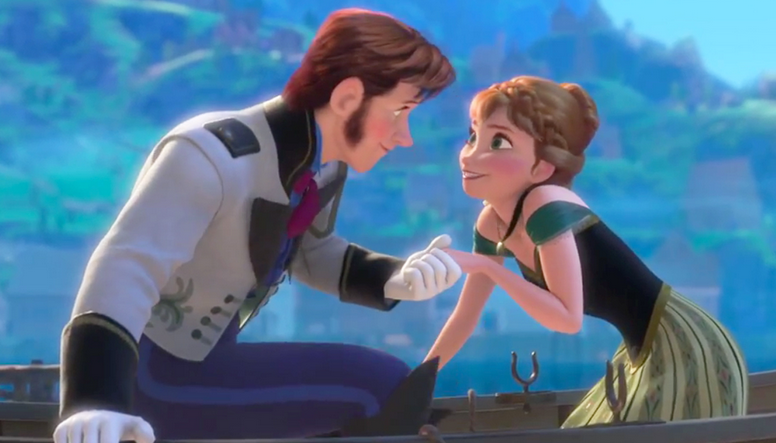 The flipped script of the Prince Charming plot point with the Hans character is a great opportunity to talk about circumspection, motives, initial gut instincts, and the pain and anguish of two-faced betrayals.
The flipped script of the Prince Charming plot point with the Hans character is a great opportunity to talk about circumspection, motives, initial gut instincts, and the pain and anguish of two-faced betrayals.
Though no one wants to raise kids to be edgy cynics, the “too good to be true” scenario offers ways to uncork conversations about social media personas, even ‘grooming’ and duplicitous conduct without instilling alarmist predator ‘stranger danger’ anxiety needlessly. Again light touch vs heavy hand… “Could s/he be a Hans?” becomes conversational media shorthand.
Sexuality vs Sexualization:
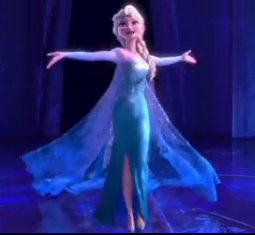 The Disney treatment of predictable segue of extremes from covered up/Puritan clothes to emerge as a smokin’ hot, sexy strapless femme fatale alludes to some messaging that needs deconstructed on healthy sexuality vs sexualization.
The Disney treatment of predictable segue of extremes from covered up/Puritan clothes to emerge as a smokin’ hot, sexy strapless femme fatale alludes to some messaging that needs deconstructed on healthy sexuality vs sexualization.
Elsa’s glove-flinging empowerment and let the hair down cliché is quickly followed by a slinky, slit spectacle of a gown and hip-swinging sashay that imparts a “girls can’t wait to loosen up and embrace their inner hotness” sexuality when it’s really more about selling pretty wardrobe gowns and accessories for marketing consumables, with a side of sexualized objectification.
…Might want to have that chat and use some of these posts to challenge the movie machine, as toddlers are already imitating this song in umpteen YouTube renditions using the sexy screen persona as a guideline for parroting what “empowerment” looks like…In this case, it’s appearance-based transformation, which needs some huge body image icebreakers in ‘handle with care’ mode. “So sexy so Soon” toddlers are not what we’re goin for here…so rechannel that empowerment message with gusto.
In this video clip of “21 mini-Elsas” parroting the powerful Let it Go song, notice how these girls cue off of Elsa’s animated motion on the screen and mimic and imitate everything from letting the hair down to tossing the tiara. Behavioral cues matter a LOT, people…we can lose the sexualization of six-year olds just to sell more sparkly slit gowns and pretty poofy costumes, am I right?
Gender Portrayals, Masculinity, Femininity and Nuanced Characterization
Talk about what makes this film different (or does it?) Chat about stereotypes and personality traits assigned to the leads, as well as the more sensitive, positive portrayals that have shifted the Disney dimension from 2D flat to 3D full characterization in many critics’ circles…
 Perseverance, Teamwork, Friendship
Perseverance, Teamwork, Friendship
Springboard off of the roles of the beloved Olav the snowman, the goofy fun reindeer and the unity of purpose to triumph as a team has countless positive picks…
“For your consideration…”
Ask kids why they think this Academy Award nominee is being given a nod, and what qualities and script attributes they think sets it apart? The plot points pile up like a snow drift with so many ways to spin deeper more meaningful conversations on a wide array of topics. I’d love to hear all the nuanced conversations coming out of this blockbuster hit film…so plop your favorite topics in the comments and share what you’ve created in the way of social emotional bonds.
Using media as an icebreaker to listen to kids’ views; not just how the film is landing on them but reading between the lines of what’s really being said to unearth commonalities and build trust, has huge benefits for building intimacy on the family front.
Have fun! Let me know what you learn!









I just taught an acting camp for 4-11 year olds at a faith based arts school in VA. The topic of bullying frequently comes up when I work with kids, but the primary thrust of our camp was what happens when you make fear based decisions, versus decisions grounded in love. When you function in love, you can create something beautiful.
Wow, I really like these comparisons! It is so important to connect with kids in a way that they can relate to. On Friday nights, I like to turn off my phone and put away the iPads. We break out fun conversation starters to entice the family to learn about one another. Here are some fun ones in case you were interested. https://www.upparent.com/questions/what-are-your-favorite-conversation-starters-for-kids
Thanks for the great article!